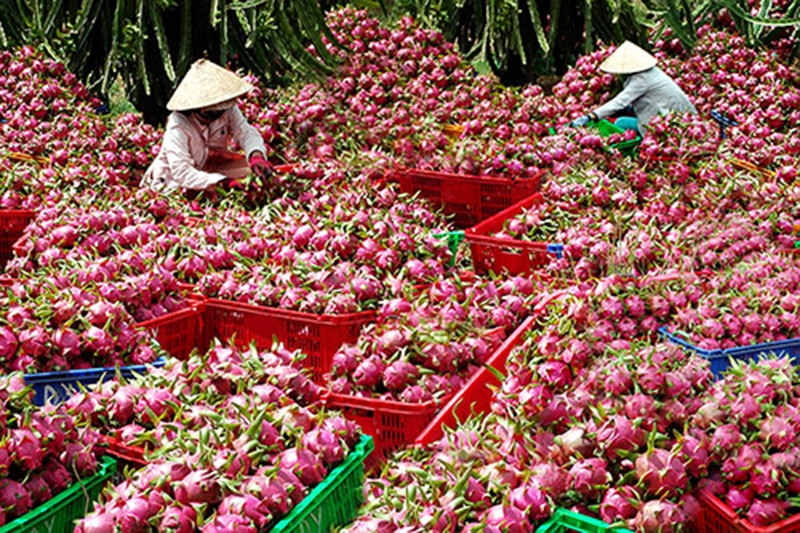The fear of the global supply chain crisis returns
China’s strict rules to combat the epidemic are about to usher in a new wave of chaos with the world supply chain.
Congestion at China’s ports, combined with the war in Ukraine, threatens to deliver a one-of-a-kind “punch” that derails the recovery of the world economy, which has already been affected by inflationary pressures. broadcast.
According to San Francisco-based freight forwarder Flexport (USA), it now takes an average of 111 days for goods to arrive at a warehouse in the US, from the time they are ready to leave the factory in Asia. The number of days is close to the record 113 days in January and more than double that of 2019. The journey to the West Coast to Europe took even longer, with a record of nearly 118 days.
In China, ships queued longer offshore after Shanghai, home to the world’s largest container port, began a blockade. According to the data of Bloombergthe total number of container ships docking and leaving the mooring area of Ningbo port in the middle of last week was 230, up 35% from this time last year.

Container ships moored off the coast of China (yellow dot) waiting to dock on April 20. Photo: Bloomberg
Imported containers in Shanghai are waiting an average of 12.1 days before trucks arrive. This number is nearly three times higher than 4.6 on March 28. Congestion has crippled efforts to supply factories with inputs and ship exports of goods such as cars and electronics.
Air freight is also being affected, with cargo arriving at Pudong International Airport (Shanghai). Congestion spread to Shenzhen as it saw a sharp increase in shipments from Shanghai. Donny Yang, director of sea freight transport Dimerco Express (Taiwan), said that to relieve pressure, the goods were diverted to Ningbo and Thai Thuong. At the same time, the Chinese government also directed to facilitate the smoothness of the expressway system.
In the US, the total number of container ships in the ports of Los Angeles and Long Beach was at least 57 as of the middle of last week, the highest since the end of February. Several other indicators such as the length of time containers are also increasing. return.
A portion of California’s backlog is simply moving eastward in search of faster routes. As a result, data from MarineTraffic shows that congestion is reversed, as the East Coast overtakes the West Coast in terms of containers lined up waiting to be unloaded.
Congestion in Europe is also more severe. Major ports such as Rotterdam, Hamburg, Antwerp and three ports in the UK are operating at high capacity. They are struggling to receive more containers because there is no space left to hold them.
Economists at Goldman Sachs last week conceded that supply chain troubles were “somewhat worse than we expected, and we have slightly revised our growth and inflation forecasts in recent weeks”. Stephanie Loomis, CargoTrans’s vice president of international purchasing, said some companies may have tried to move their orders elsewhere or cancel them.
Experts predict that, even if the epidemic is contained, supply chain disruptions will still spread globally, lasting all year. “We expect more turmoil than last year. It will have a negative impact on the whole of 2022,” said Jacques Vandermeiren, chief executive officer of the port of Antwerp, Europe’s second-busiest port.
China accounts for about 12% of global trade, and its anti-epidemic restrictions have shut down factories and warehouses, slowed truck deliveries and exacerbated container traffic jams.
US and European ports are already flooded with cargo, making them even more vulnerable to this new shock. “As exports resume and a large number of ships arrive at US West Coast ports, we expect wait times to increase significantly,” said Julie Gerdeman, CEO of chain risk analysis firm. provides Everstream Analytics, said.
In the short term, congestion means increased costs to the $22 trillion in global merchandise trade, which fell in 2020 and rebounded last year. In the long run, chaos is drawing the link of cross-border e-commerce. With some CEOs reeling from remote production networks, bringing factories closer to home is no longer a patriotic slogan but a necessity amid uncertainty.
Lorenzo Berho, CEO of Vesta, a developer of industrial buildings and distribution centers in Mexico, says it is turning to shorter supply chains. They want to go to places like Mexico to reduce their exposure to Asia. “Globalization as we know it may be coming to an end,” he said.
Key policymakers are pitching the idea of a change in supply chains for the developed world. Much of it hinges on whether the pandemic will convince consumers to pay higher prices for products produced near their homes. At least one advisory analysis showed such acceptance.
Brian Ehrig, a consultant at Kearney Consulting, said relocating the supply chain “could cost more, but if you’re producing less and selling for roughly the same price, it can be replaced. completely change the game”.
One of their surveys found that 78% of CEOs are considering reconfiguring the supply chain. “I think globalization will never die, however, it will evolve into a different form,” said Kearney expert Shay Luo.
Companies have weathered the supply turmoil of the past year in part by raising prices, and consumers have largely accepted. However, In the short term, tight supply from China poses a more daunting challenge to household demand.
Tesla lost about a month of production during the Shanghai closure. Retailer Bed Bath & Beyond earlier this month said inventory levels were “extraordinarily high” during periods of shipping or port congestion.
Alcoa, the aluminum giant vital to the global economy, last week blamed transportation problems for higher inventories. Continental AG, Europe’s second-largest auto parts maker, has downgraded its forecast for global passenger vehicle and light commercial vehicle production growth from 4% to 6%, from 6% to 9%. .
Wang Xin, head of the Shenzhen Cross-Border E-Commerce Association, an organization representing about 3,000 exporters, said the city’s blockade lasted only a week but “many sellers are suffered a one-month delay in delivery”.

Trucks wait in line to pass a checkpoint on a highway bound for Shanghai on March 30. Photo: Bloomberg
From auto manufacturers to electronics manufacturers in Shanghai have gradually resumed operations, under a closed production policy. However, ramping up production after a shutdown is not an instant process. Tesla has restarted its Shanghai factory after a three-week shutdown, but it is uncertain how long it can operate with a limited supply of components.
“The change in Covid prevention policies in different cities has had a particularly severe impact on logistics,” said Cui Dongshu, general secretary of the China Passenger Car Association.
European Central Bank (ECB) President Christine Lagarde said Europe’s level of integration in global value chains is even higher than that of the US. The eurozone’s share of trade in GDP rose to 54% in 2019 from 31% two decades ago, compared with a 3 percentage point increase in the US, to 26%.
She also cites a recent survey showing that 46 percent of German companies have significant input from China. Of those, nearly half are planning to reduce this dependency. Russia’s military campaign adds to the tendency to seek the lowest-cost suppliers in the same geopolitical alliance.
Ms. Lagarde said Europe must work towards making trade safer in unpredictable times, while leveraging its own regional strength. “Even industries that are not considered strategic are likely to suffer from the disruption of the global trade order and self-regulate production,” she said.
Session An (according to Bloomberg)
at Blogtuan.info – Source: vnexpress.net – Read the original article here



